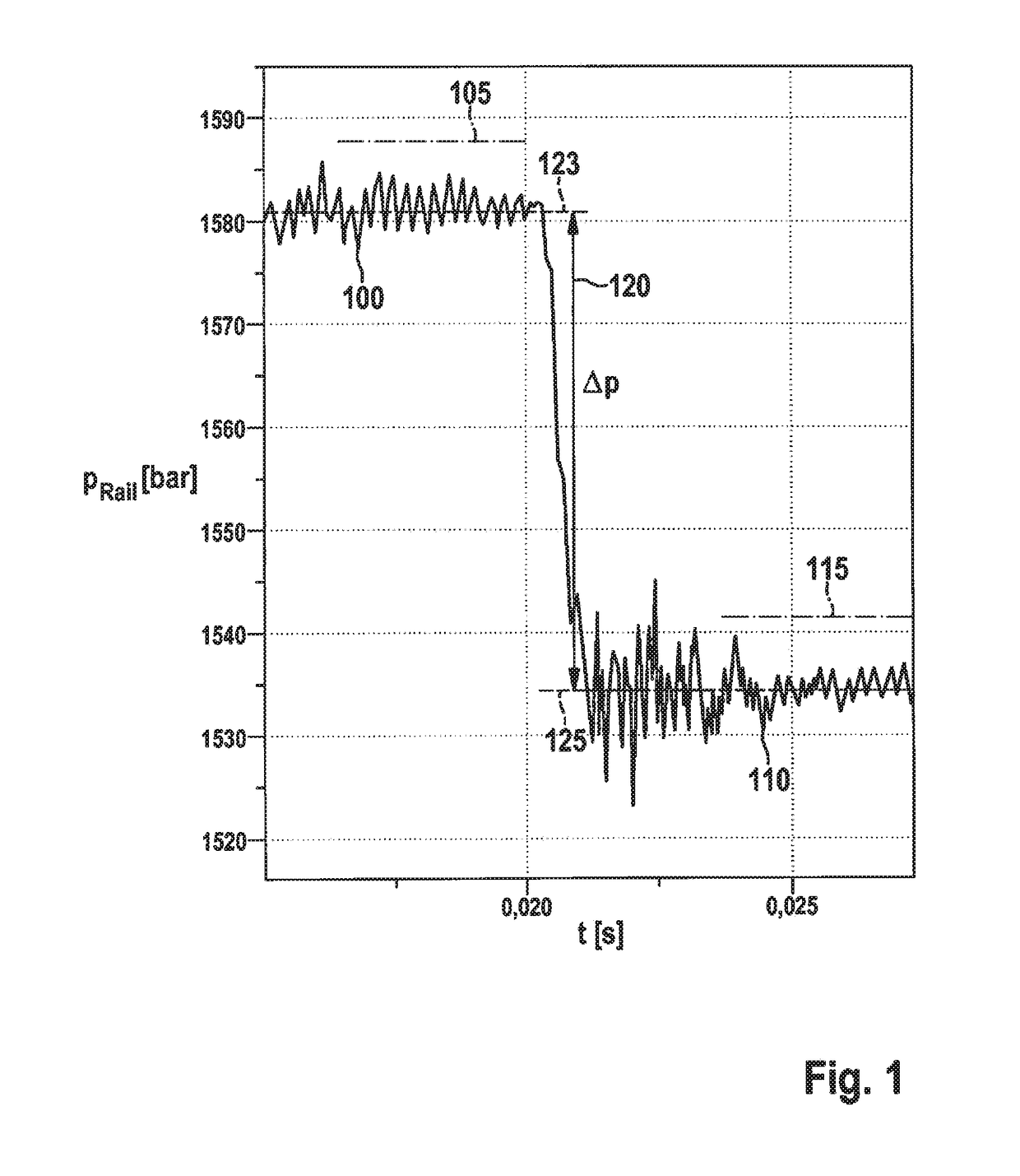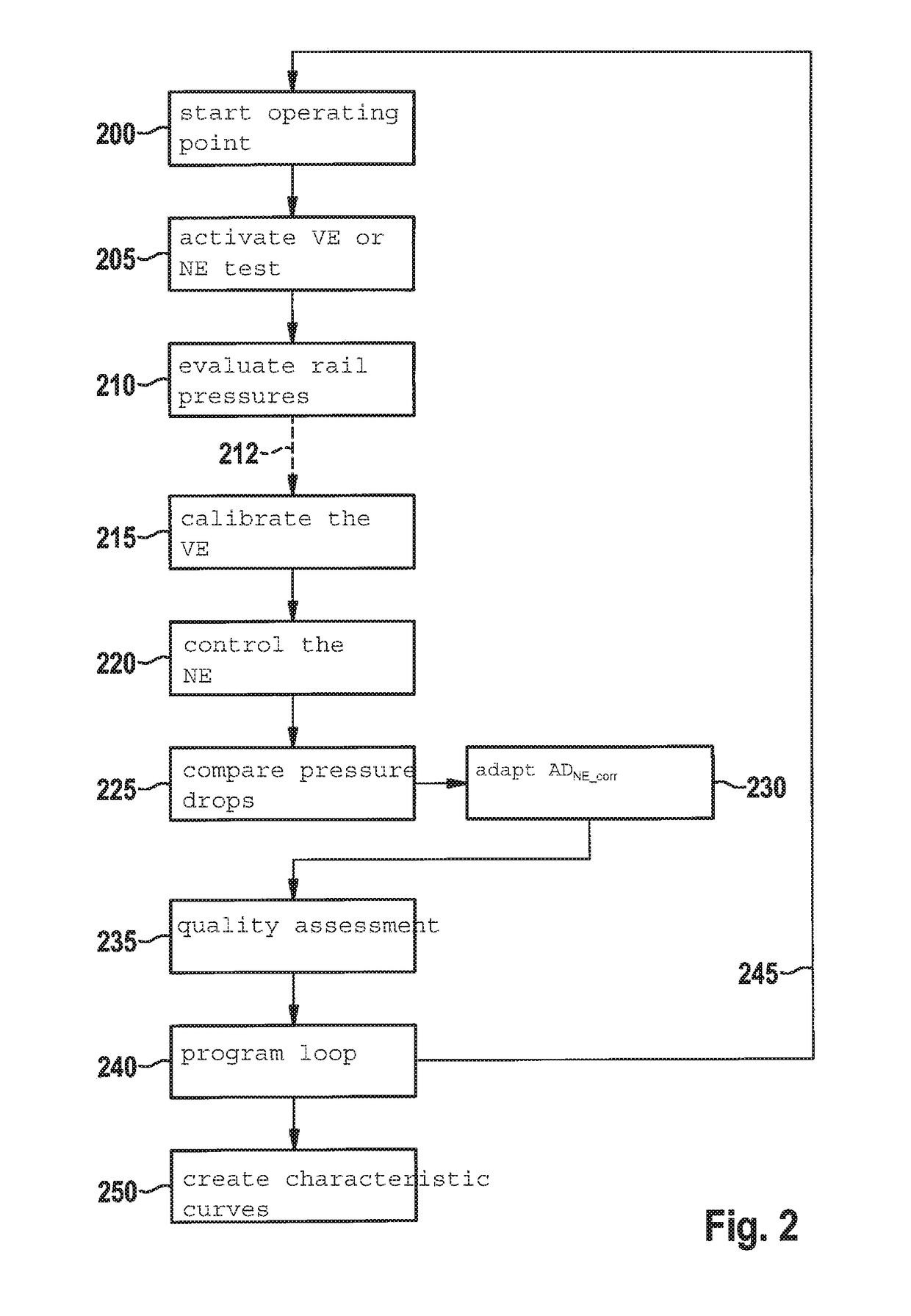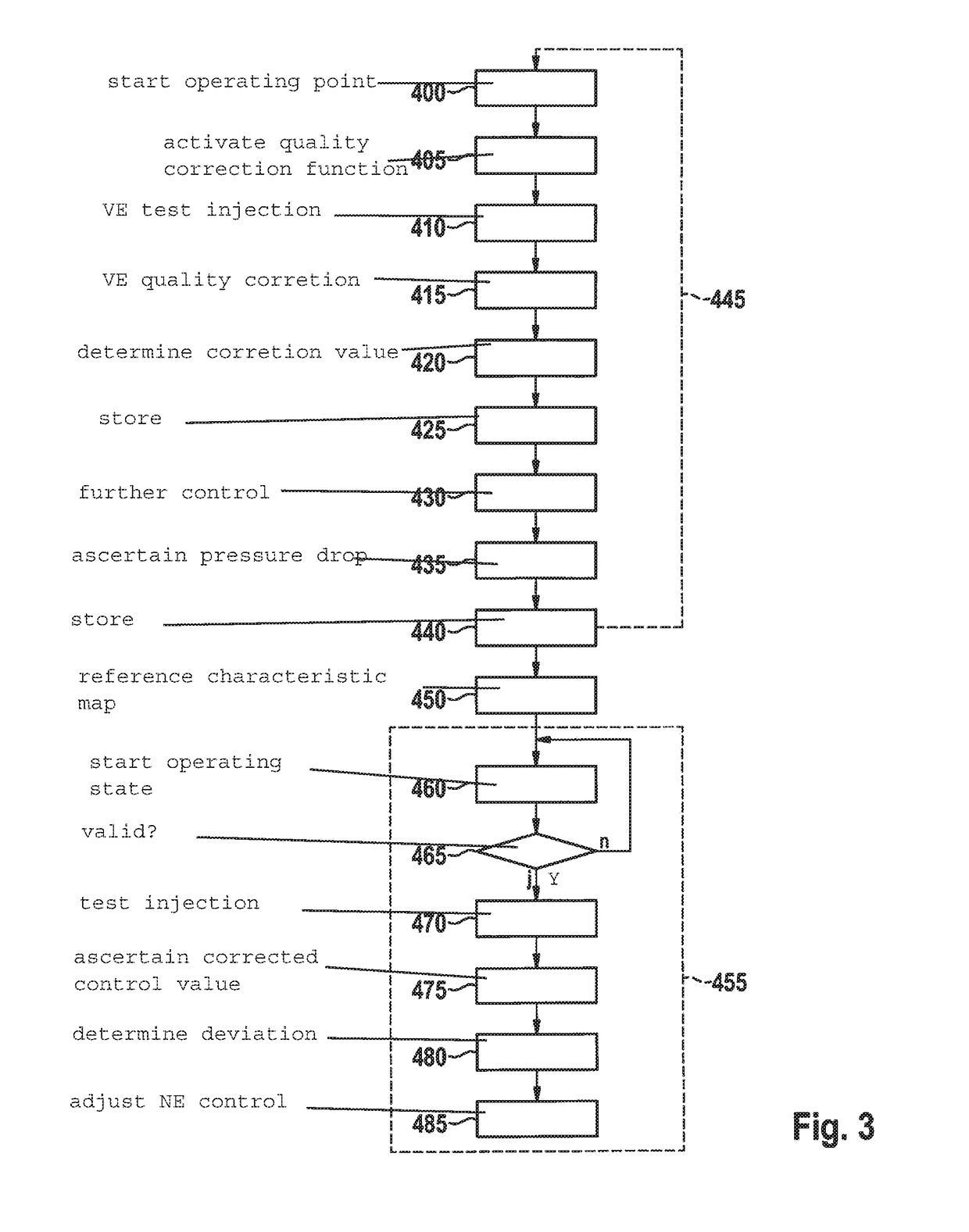Method and device for calibrating post-injections of an internal combustion engine
a post-injection and internal combustion engine technology, which is applied in the direction of combustion engines, machines/engines, electric control, etc., can solve the problems of low temperature of particle filters, damage to filter components, and inability to provide post-injections that are not instantaneously effective and relatively late in terms of time, and achieves a relatively simple and cost-effective
- Summary
- Abstract
- Description
- Claims
- Application Information
AI Technical Summary
Benefits of technology
Problems solved by technology
Method used
Image
Examples
Embodiment Construction
[0029]FIG. 1 shows an example of a rail pressure curve in a common rail injection system during an injection, which in the present example takes place at a point in time of approximately t=0.020 s. Shown pressure drop (Δp) 120 resulting from the injection, from an initial pressure 100 having a first average value 123 to a final pressure 110 having a second average value 125, is used as the basis for the method described below. These average values 123, 125 are formed in temporal evaluation windows 105, 115, respectively.
[0030]In the method shown in FIG. 2, the determination of the pressure drops of a pre-injection (VE) and a late post-injection (NE), as is apparent from FIG. 1, takes place based on the mentioned two evaluation windows 105, 115. In this exemplary embodiment, these evaluation windows have already been established during the manufacture of an internal combustion engine or an injection system, discussed here, of such an internal combustion engine, for example on an appr...
PUM
 Login to View More
Login to View More Abstract
Description
Claims
Application Information
 Login to View More
Login to View More - R&D
- Intellectual Property
- Life Sciences
- Materials
- Tech Scout
- Unparalleled Data Quality
- Higher Quality Content
- 60% Fewer Hallucinations
Browse by: Latest US Patents, China's latest patents, Technical Efficacy Thesaurus, Application Domain, Technology Topic, Popular Technical Reports.
© 2025 PatSnap. All rights reserved.Legal|Privacy policy|Modern Slavery Act Transparency Statement|Sitemap|About US| Contact US: help@patsnap.com



